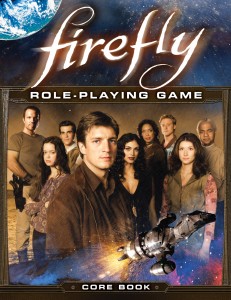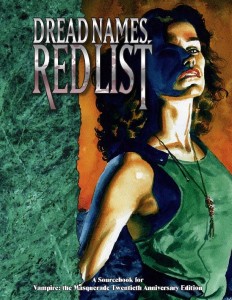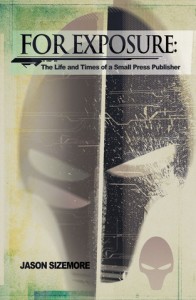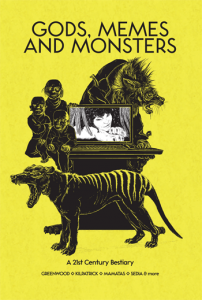
I know I haven’t blogged in a while, and I deeply apologize for that. There’s been a lot going on (good and bad) in my corner of the universe, so my convention reports are slow going. I’ve been meaning to blog about Netflix’s original episodes for a while now, though, and I feel that the debut of Sense8 is a great opportunity to dive into my thoughts about Netflix’s original programming. Without further adieu, let me dive into why I feel that this is a landmark moment in television and fantastic for script writers.
Back After Commercial
American sitcoms, in particular, have traditionally been structured to map the story to based on when the viewer is watching the screen. However, even if placement is marked within an episode to account for commercials, the fact that the presentation doesn’t have them at all (or, in Hulu’s case has limited and repetitive commercials) is pretty important to how that show is received by the viewer. When you’re watching all scenes concurrently, you don’t necessarily see the seams that are present to account for commercials. This, in my mind, is especially true of Sense8. You don’t get any commercial breaks, so you’re essentially watching the episode from start to finish, even though you can pause at any point.
While the viewing a show with “no commercials” has been done for a while, I felt this was valuable to point out because a lack of commercials is an effective way to get viewers to watch original programming. I feel there’s a push-pull relationship between the audience and the writers here. There’s a difference between writing a show with no commercials in mind versus writing a show with them in mind. There is, however, also a difference between watching a show that doesn’t have any commercials versus viewing it in its entirety. That dynamic can lead to the overall experience of any series, and I’m of the opinion that this is one of Netflix’s selling points for their original series.
Release Schedule
To me, if and when episodes are released also have an impact on structure and audience feedback. If you’re releasing “an” episode a week instead of a full season’s story arc, that also impacts how the viewer may/will be left hanging. Once Upon a Time (Huge fan of that show, here…) is offered one episode per week on network television and is then viewable on Hulu.com. Similar to LOST, it’s viewed in halves as opposed to the full run, so you get a smaller number of episodes before a break in the same season. In many cases, a previous season is then released on Netflix, so I can’t get the current content and I’m not guaranteed that it will hit Netflix at a particular point. This means I’m encouraged to sign up for Hulu.com and keep watching the current episodes over there. Any pre-packaged show that’s released as a full season doesn’t have the same issues as a show that is doled out week-by-week, because the number of viewers isn’t married to a time slot. The other issue I see with any temporal viewing of a show, is that once a TV show airs, it’s usually gone unless backed up by a secondary source. Due to the volume of media that’s out there nowadays, viewers have more choices than ever before to watch what they want, so I’m guessing the rate of abandonment could be a lot higher.
The “time slot curse”, to my limited understanding of what happened, is partly why Constantine didn’t get picked up again [link and link]. The show originally aired in a 10 p.m. Friday night time slot, and was moved for the last five episodes two hours earlier. I don’t envy the people involved in trying to figure out what would make this show work. The data for television viewing is now scattered across multiple platforms, because that’s how people are viewing TV shows now-a-days. That makes it hard to collate data to find out who’s watching what and when, especially since those methods were static for far too long.
Data collation and analysis is now far more sophisticated than it’s every been, and I’ve often seen decisions made based on an outlier or data that highlights a bigger problem (e.g. Like the time slot), as opposed to looking at trends and comparisons. That’s not to say that’s what is happening here, mind you, but I think there’s a case to be made for challenges with analysis when certain questions are important. If a decision-maker is just focused on the number of viewers, fans, etc. then there’s bound to be challenges with the outcome, because often the whys/hows/whens paint a broader and more complete picture of what’s going on, since the data is the result not the reason for what’s going on.
Mind you, as a creative professional myself I don’t always feel that data-driven decisions are what’s best for any show creatively, but they are the nature of the beast since money is a factor. In Constantine‘s case, I feel the massive cancellation rumors that began to swell last fall before the first season was done being aired turned a number of viewers off. Rooting for the underdog is one thing, but most viewers–including myself–want to see a Season 2 especially if the first season ends on a cliffhanger. Otherwise, what’s the point in getting fully vested in a show that’s about to be canceled? By the time the show changed time slots, it was too late — which is unfortunate. I really liked this iteration of Constantine and was hoping it’d find a home. Still do.
Fortunately, Netflix doesn’t have to worry about time slots or data collection issues outside of some potential lost data that occurs from certain browsers or platforms. Thus, there’s a distinction to be made between any show that’s sold pre-packaged, as it also seems to be the case with Netflix [Link], versus filming episodes on-the-fly per whatever the contract terms are. I’m of the opinion that longer contracts are better for shows all around, because the end result always seems to be of a higher quality. Babylon 5, in my mind, is a stellar example of television because the show had a determinate plot that breathed specifically and intentionally over the course of a few seasons. While there were some lighter-themed “Here’s the space station issue of the week” stories in each season, the metaplot and build up to that end game seemed to have been designed from the beginning. Often, the opposite seems to hold true. There’s no doubt in my mind that Whedon’s Firefly and Dollhouse, had they been extended beyond their short life spans, would have given him even more opportunities for his stories to breathe, especially given his expert handling of ensemble casts.
No Need to Press “Record”
As a follow-up to my previous point, the fact that a viewer can log in at any time to watch (or rewatch) any episode within a particular show is a Pretty Big Deal to me. Netflix logs where you stop watching the series and a specific episode so you know where you left off. You don’t have to set up a TiVo or sit around pressing the Record button; it’s simply there for you to watch when you want to. To me, this means that the act of viewing an episode is more passive than active, because viewers simply need to log into Netflix and watch the show whenever they want. No other action is required. I feel that means that the hook for the show better be damn good, because if all viewers need to do is show up, there should be a compelling reason why that is.
Though their original programming is newish, many of the later shows appear to be more unique than they were in the past, even approaching demographics (age/sex/etc.) that are often underexplored in the television format. I don’t want to derail this post too much, but I feel that this has allowed creative professionals to be more creative, to take more risks, and to tell the fearless stories they’ve been dying to tell. To me, this opportunity has to do more with money than anything else. Translation: in many verticals, investors often play it safe by basing their purchase decisions on what came before, instead of taking a chance on something new, because the data exists to show what worked and what didn’t. However, with so many options for viewing trying to grab people’s attention, I feel we’re now in a television renaissance.
Censors, Censors, Censors
The F-Bomb. Sex. Graphic violence. Etc. Etc. Etc. Netflix doesn’t seem to worry about censors. This has opened the door to writing that doesn’t typically need to follow certain guidelines that have been in place for years, which allows creators to take certain risks according to the needs of the story they want to tell, as opposed to the story they have to tell within the confines of certain guidelines. With no commercials and no language/content restrictions, shows can take more risks of an experimental nature. Though the structure is dependent upon a certain number of minutes which is, in Sense8‘s case 48 minutes long, the writers and producers do seem to be less confined. Some comparisons could probably be made to cable television shows, especially when they first aired back in the day, and I feel that there are some parallels to that evolution given the nature of how original programming is also making waves.
Thoughts on Sense8
So far, I’ve seen the first couple of episodes of Sense8, and in my mind there’s a certain amount of comic book-style storytelling that’s occurring in this show. Looking at similar shows in the genre, namely The 4400 and Heroes, Sense8 seems to be heading toward a specific ending in mind that makes sense for the overarching plot. First, we have to get “to” the plot — which is shrouded in mystery. I feel this was intentionally done, because there’s a specific story-related issue that will arise from a plot where eight strangers from around the world are interconnected telepathically. Once they master their shared abilities, whatever those happen to be, then there’s a good possibility that there’s no where else for them to go. That conflict, and the conflict with the outside force that hunts them, has to be introduced slowly. Otherwise, there’s no hook anymore.
While I haven’t nerded out enough to see how many minutes are devoted to the characters, they have mostly been shown (so far) in pairs each time they appear. The eight characters that are located around the world give the plot some weight, because any organization that’d be after these individuals would have a much harder time trying to find them. Also, the use of an ensemble cast is a fantastic way to highlight diversity either in a specific city or, in this case, to show how truly random these characters area. The ensemble cast, in particular, is something I think a lot of writers should pay attention to. There’s a lot of rich characterization with these characters that goes beyond ability, and I feel it’s worth watching for that reason.
Anyway, those are my thoughts on Netflix, original programming, and television at the moment. Television is such a fun format, and I’m glad to see there’s some innovation happening. Exciting times!
Mood: 50% Zen. 50% caffeine withdrawal.
Caffeinated Beverages Consumed: Some, trying to get a handle on it. Cut out diet soda. Feel awful.
Work-Out Minutes Logged Yesterday: Three blarghs for leg lifts.
In My Ears: Some crap that’s classical mixed with east coast house. Me no likely.
Game Last Played: Sonic All Stars Racing Transformed
Book Last Read: I have a stack next to my machine for research.
Movie/TV Show Last Viewed: On Season 2 of Agents of S.H.I.E.L.D.
Latest Artistic Project: Um…
Latest Fiction/Comic Release: Last Man Zombie Standing.
Latest Game Release: Gothic Icons, Smuggler’s Guide to the Rim, and Ghosts in the Black
What I’m Working On: Read my latest project update. Plus, pitching. Oy.





